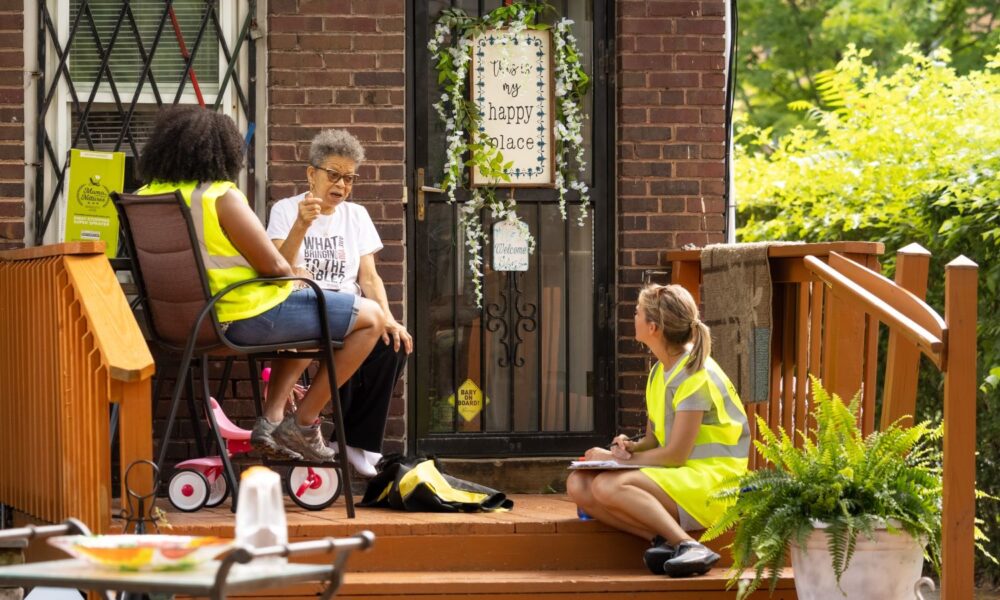The evidence is clear: Relational organizing, together with data-driven outreach, can substantially increase voter turnout in historically marginalized or underserved communities. Here’s what you need to know to turn these findings into action and build power for your community.
What is relational organizing?
Relational organizing involves semi-structured, one-on-one conversations with community members that strengthen interpersonal relationships, which in turn strengthens both individual political engagement and amplifies community voices on local, state, and national issues.
Greater Cleveland Congregations (GCC), a nonpartisan organization of faith communities and partner organizations working to achieve social justice in Cuyahoga County, Ohio, has been using relational organizing and a neighborhood captain program in recent elections, and is working in partnership with UCS to expand its relational organizing capacity by developing an integrated voter engagement (IVE) system.
The neighborhood captain program relies on the power of people’s existing social networks, encouraging people to start conversations with people they know. GCC recruits and trains neighborhood captains to reach out to infrequent voters in their neighborhoods, listen actively, and build support for greater political participation. Potential voters are asked about their commitment and encouraged to vote as part of a broader program of community engagement and leadership building.
Our new in-depth analysis of recent results clearly shows that an IVE system can improve voter turnout in historically marginalized or underserved communities. By using data-centered outreach that integrates voter files with information retrieved from relational organizing, this system helps to build power that can yield benefits for those communities, despite the structural barriers to participation that create inequities.
What the evidence shows
The report, Building Relationships, Building Power, includes the following notable findings:
Organizing yielded positive results. On average, contact success—defined as getting the persons contacted to commit to voting—for each active neighborhood captain across elections was approximately 50 voter households.
Turnout inequalities were reduced. In the November 2022 election, overall turnout in Cleveland’s 5th Ward was just 15 percent—half that of the city as a whole. But among those who committed to voting through the neighborhood captains’ efforts, turnout was 42 percent.
Youth turnout increased. The youngest voting cohort in the Cuyahoga County voter file—born after 1992—voted at an overall rate of about 17 percent, but younger voters who committed to voting through relational organizing were nearly twice as likely to vote, close to the average turnout rate for Cleveland in 2022.
Organizers can use election science and technology to build power
The data generated from this project allow us to forecast the effects on voter turnout if we could scale up GCC’s relational organizing model. For example, using the same average conversion rates and adjusted 2020 turnout rates, we estimate that voter turnout in 2024 could be increased by 10 points over the last presidential election in the county’s lowest turnout precincts, bringing them more in line with average turnout rates across the city.
These findings clearly show how relational organizing can help overcome persistent inequalities in voter turnout. We need greater application of technologies like integrated voter engagement, combined with strong relationships with local election administrators. Every community can benefit by incorporating integrated voter engagement into their election efforts. Together we can improve participation and the health of our democracy at a time when we desperately need it.

